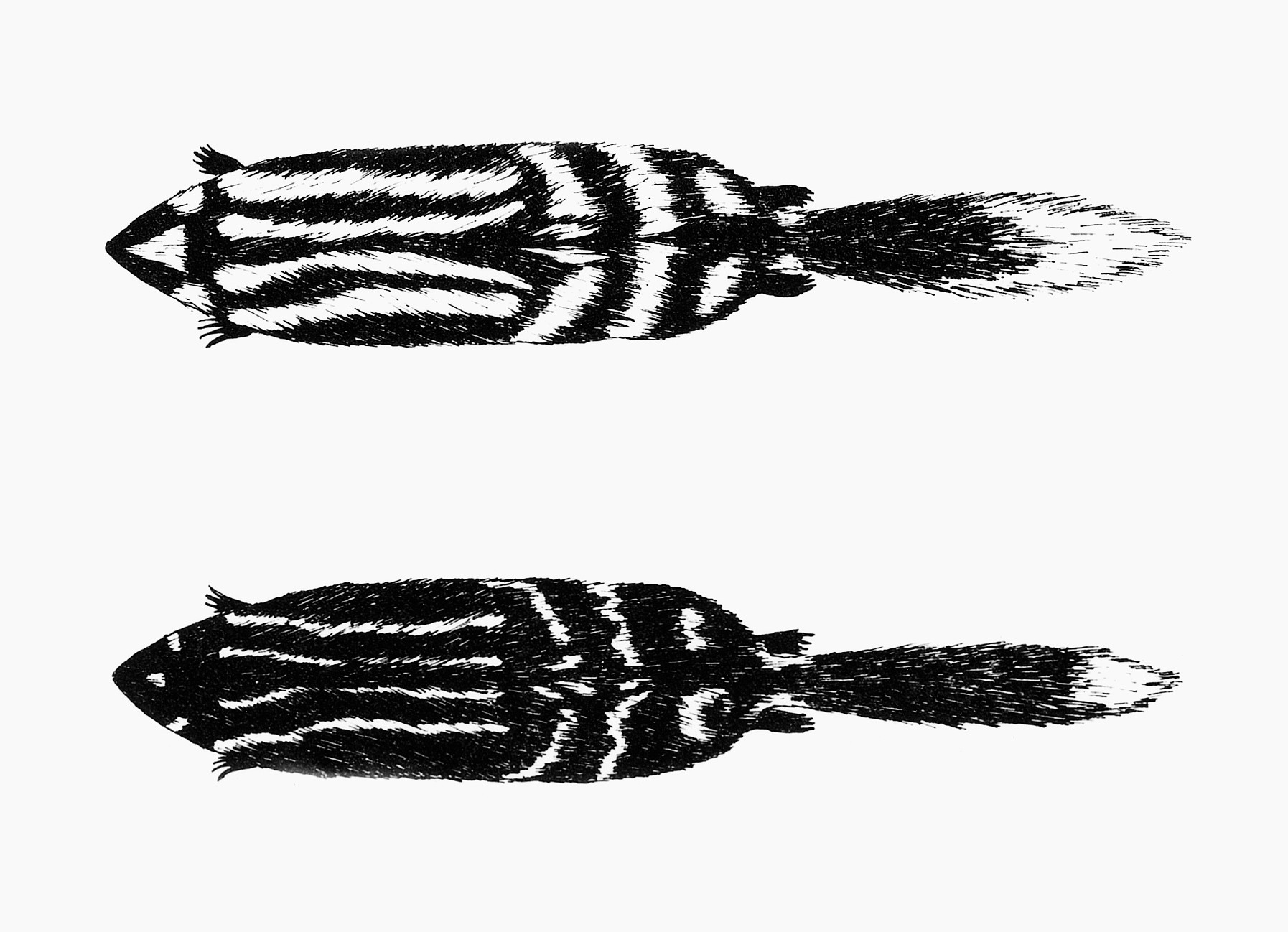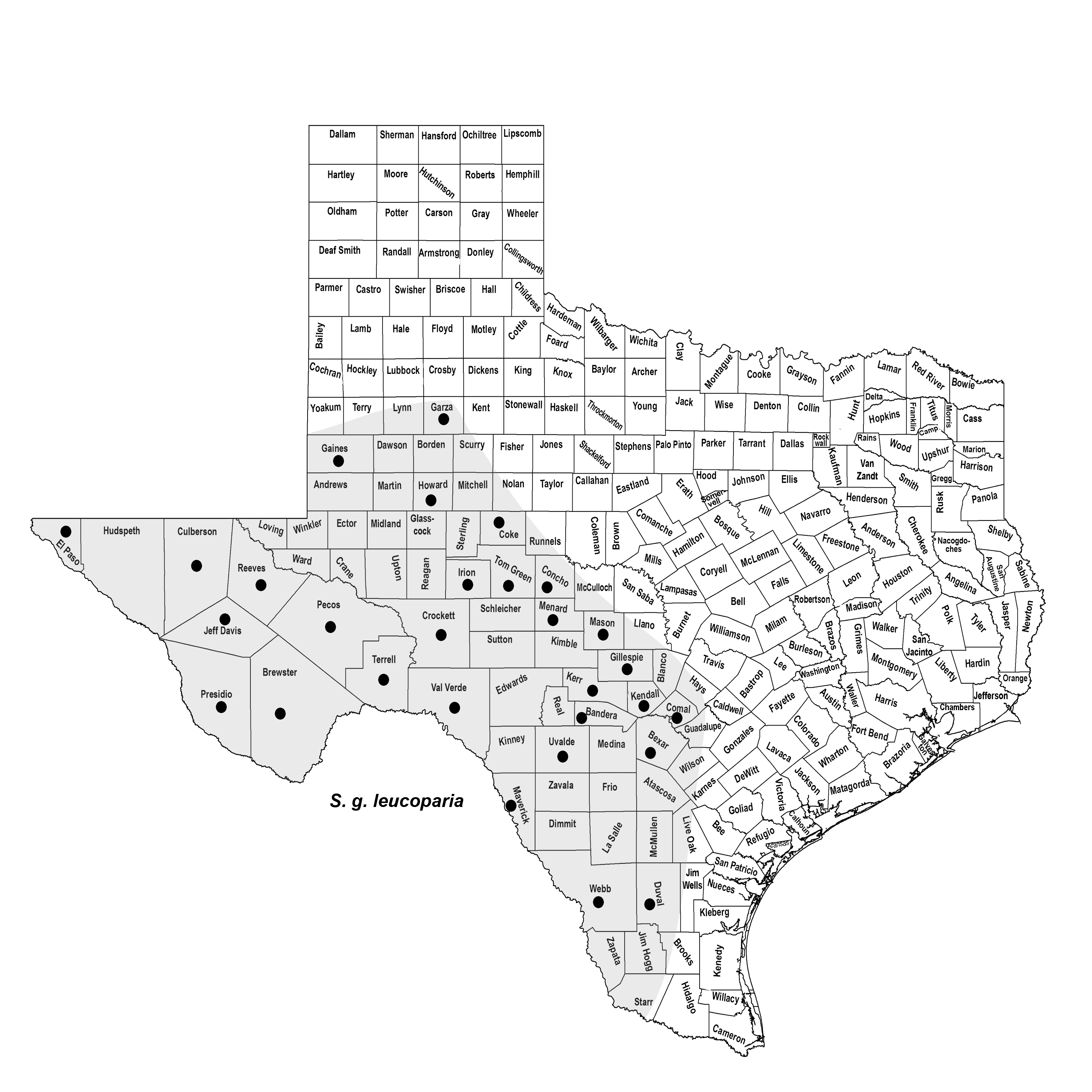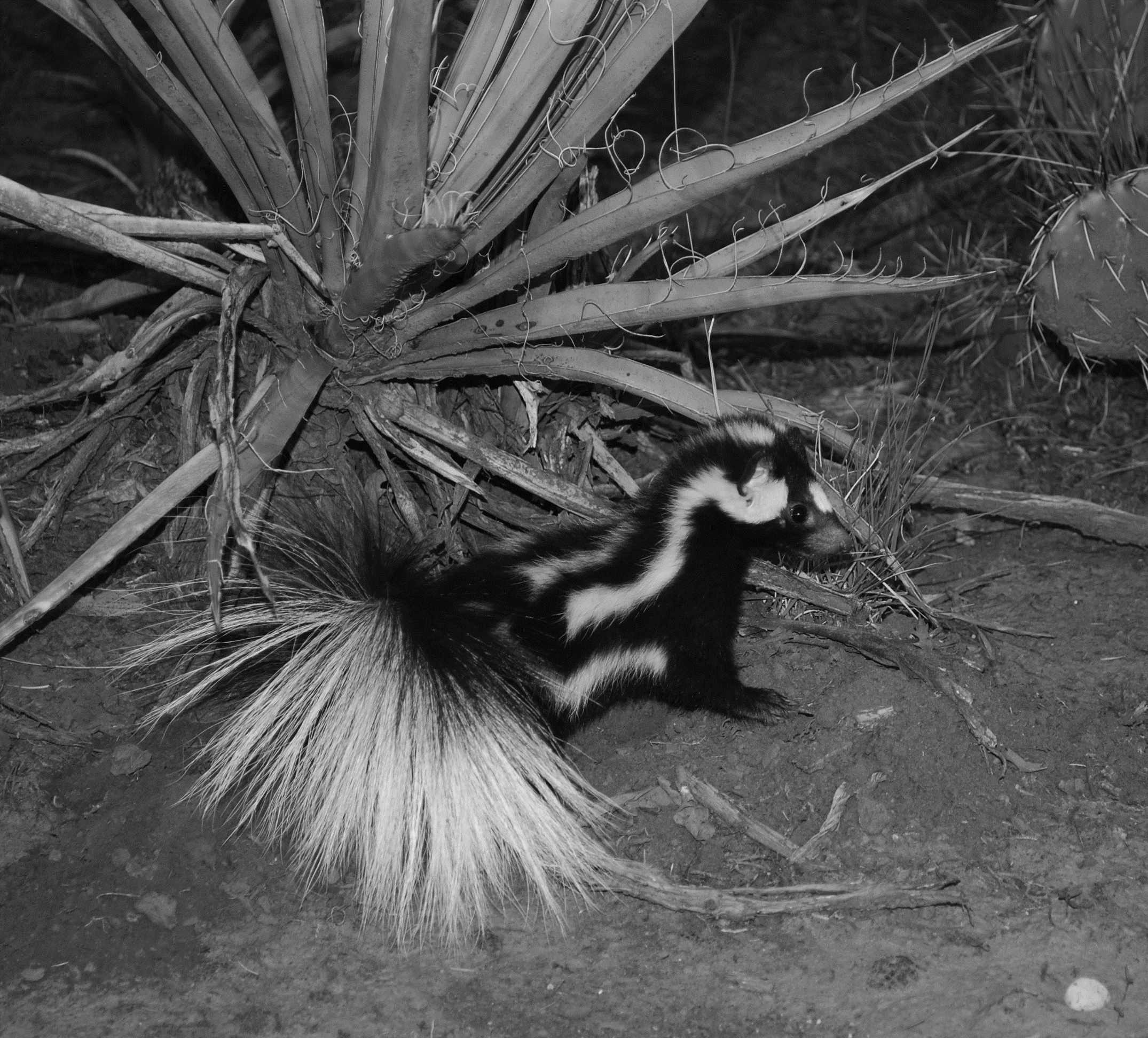WESTERN SPOTTED SKUNK
Spilogale gracilis Merriam 1890
Order Carnivora : Family Mephitidae
DESCRIPTION. Color pattern resembles that of the eastern spotted skunk, Spilogale putorius, but white marking is more extensive, the black and white stripes on upper back nearly equal in width (in putorius the black areas are much more extensive than the white); dorsal pair of white stripes begin between the ears or just posterior to them (on back of head in putorius); white area on face large, extending nearly from nose pad to a line back of eyes and covering more than half of area between eyes; underside of tail white for nearly half its length, the tip extensively white (see figure below). Dental formula: I 3/3, C 1/1, Pm 3/3, M 1/2 × 2 = 34. Averages for external measurements: of males, total length, 423 mm; tail, 134 mm; hind foot, 43 mm; of females, 360-129-40 mm. Weight of males, 565 g; of females, 368 g.

DISTRIBUTION. Recorded from southwestern part of state as far north as Garza and Howard counties and eastward to Bexar and Duval counties.

SUBSPECIES. Spilogale g. leucoparia.
HABITS. This skunk occupies a variety of habitats and often occurs in close association with humans. In Texas, most records of capture indicate that it is most often associated with rocky bluffs, cliffs, and brush-bordered canyon streams or streambeds. In the Edwards Plateau, rock fences seem to be especially attractive, possibly because they also provide denning sites and serve as refuges for many kinds of animals on which the spotted skunks feed. They also have been reported denning in hollow logs and, since they are adept at climbing, in the attics of houses. Spotted skunks are omnivores, feeding on insects, small mammals, amphibians, berries, and fruits. They have been reported to feed on bird eggs, young rabbits, mice, and such arthropods as grasshoppers and scorpions.
Sexually mature females come into estrous in September, and most of them are bred by the first week in October. The blastula stage of the embryo spends 180–200 days floating free in the uterus of the female before it becomes implanted. The two to five (average four) young are born in late April and May after a total gestation period of 210–230 days. Young females become sexually mature when only 4 or 5 months of age. Testes of both adult and young males begin to enlarge in March, are producing quantities of sperm by May, and reach their largest size during the height of the breeding season in September. In October, the testes begin to regress in size and the formation of sperm is halted. Thus, the males are incapable of fertilizing the females during the period from November through March. Even though the males are capable of breeding several months before the females come into estrous, no breeding takes place until the females are receptive.
POPULATION STATUS. Uncommon. Populations of this species appear to be declining, apparently in response to the degradation of prairie habitat in the state.
CONSERVATION STATUS. The IUCN lists the western spotted skunk as a species of least concern, and it does not appear on the federal or state lists of concerned species. This is a species that requires careful monitoring in the future.
REMARKS. In his 1959 revision of the genus Spilogale, Richard Van Gelder suggested that the only differences between the eastern (S. putorius) and the western (S. gracilis) forms were size and color patterns. He therefore relegated S. gracilis to a subspecies of S. putorius. Thus, spotted skunks in Texas were treated as a single, wide-ranging species with four subspecies (designated gracilis, leucoparia, interrupta, and putorius). Using reproductive data, however, during the 1970s Rodney Mead at the University of Idaho discovered that the eastern and western spotted skunks in the United States were behaving as separate species. The western form exhibited an extended period of delayed implantation that was absent or short (2 weeks) in the eastern form, which meant that their breeding seasons were separate, and they were reproductively isolated. A molecular study of the spotted skunks by Jerry Dragoo (formerly of Texas A&M University) and colleagues has corroborated those differences. So, we recognize spotted skunks as two species—S. gracilis leucoparia in the western part of the state and S. putorius interrupta in the eastern part.
From The Mammals of Texas, Seventh Edition by David J. Schmidly and Robert D. Bradley, copyright © 1994, 2004, 2016. Courtesy of the University of Texas Press.
Natural Science Research Laboratory
-
Address
Museum of Texas Tech University, 3301 4th street, Lubbock, TX 79409 -
Phone
806.742.2486 -
Email
nsrl.museum@ttu.edu


